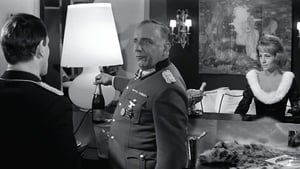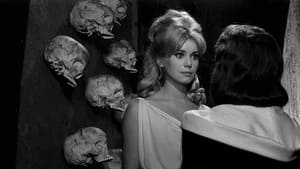Contact: [email protected]
Video Sources 0 Views

Synopsis
[ez-toc]




Introduction
In the ever-evolving landscape of cinema, where the allure of old movies often competes with the flashy allure of modern blockbusters, there’s a gem that has recently captured the attention of movie enthusiasts: Vice and Virtue Colorized 1963. This cinematic masterpiece, directed by the visionary Roger Vadim, offers a unique blend of old-world charm and vibrant new hues, bringing a fresh perspective to the classic black-and-white era. As we delve into the enchanting world of Vice and Virtue Colorized, we’ll explore its artistic merit, the significance of colorization, and the timeless impact it has left on French cinema.
Read Media File Transfer Agreement: Terms and Conditions
Read FAQ
The Artistic Merit of Vice and Virtue Colorized: A Cinematic Masterpiece Ahead of Its Time
Set against the backdrop of World War II, Vice and Virtue Colorized weaves a compelling narrative of love, camaraderie, and patriotism. Roger Vadim, known for his innovative storytelling, takes the audience on a mesmerizing journey through the lives of two sisters, Juliette and Justine, as they navigate the challenges of war. The film unfolds with a non-linear narrative structure, providing a nuanced portrayal of the characters’ experiences and emotions.
Vadim’s directorial prowess shines through in his use of symbolism, adding layers of depth to the narrative. The war-torn setting becomes a metaphorical battlefield for the characters’ inner conflicts, exploring the complexities of virtue and vice in the face of adversity. The film’s exploration of morality and human resilience resonates with audiences, making it a timeless piece of cinematic art.
Reviving the Past: The Significance of Colorizing Vice and Virtue Colorized
Colorization, the process of adding color to black-and-white films, has been a subject of debate within the film preservation community. However, in the case of Vice and Virtue Colorized 1963, the transformation is nothing short of magical. The addition of color breathes new life into the film, allowing audiences to experience the rich visual tapestry of the 1960s in a way that black-and-white films never could.
The controversy surrounding colorization is not lost on cinephiles, with purists arguing that it alters the intended artistic vision of the filmmakers. On the flip side, proponents argue that colorization serves as a gateway for new generations to appreciate classic cinema. Vice and Virtue Colorized 1963 navigates this delicate balance impeccably, preserving the essence of the original while enhancing the visual spectacle.
Exploring the key characters in this colorized rendition brings forth the brilliance of Annie Girardot’s portrayal of Juliette. Her performance, now vibrant with color, adds a new dimension to the character’s emotional journey. Catherine Deneuve’s presence as the female lead becomes even more mesmerizing, with the color palette accentuating the nuances of her performance.
Examining the Key Characters
In Vice and Virtue Colorized 1963, Annie Girardot’s Juliette emerges as a complex and compelling character. The colorization enhances the subtleties of Girardot’s performance, showcasing the emotional depth of Juliette as she grapples with love and sacrifice in the midst of war. Catherine Deneuve, in her role as the female lead, captivates the audience with her timeless beauty and acting prowess. The colorized version allows Deneuve’s performance to shine even brighter, making the characters more relatable to contemporary audiences.
The Historical Context and Its Influence
To fully appreciate Vice and Virtue Colorized, one must delve into the historical context that inspired Roger Vadim. The film draws inspiration from the works of Marquis de Sade, exploring the intricate interplay of sexuality and power dynamics. The wartime setting of World War II further adds depth to the narrative, as Vadim skillfully incorporates real-life events into the fictional tale.
Marquis de Sade’s influence on the film is evident in its unapologetic exploration of taboo subjects. The colorization process enhances the visual impact of these themes, creating a cinematic experience that is both thought-provoking and visually stunning. The parallels between Vadim’s own experiences during the war and the characters’ struggles provide a poignant backdrop, adding layers of authenticity to the storytelling.
From Monochrome to Multicolored: The Visual Transformation of a Classic
Celebrating the visual transformation of Vice and Virtue Colorized, the colorized version takes center stage. Renowned artist Roger Soubie’s contributions to the promotional materials elevate the film’s aesthetic appeal. The FilmArt Gallery, known for its dedication to preserving cinematic history, played a pivotal role in ensuring that the colorized version pays homage to the original while offering a fresh perspective.
Soubie’s artwork captures the essence of the film, portraying the characters in vivid hues that evoke the spirit of the 1960s. The promotional materials serve as a visual feast for cinephiles, enticing both fans of the classic and newcomers to explore the world of Vice and Virtue Colorized in its newfound glory.
The Legacy Continues: Vice and Virtue’s Impact on French Cinema
Originally released in the 1960s, Vice and Virtue Colorized made a significant impact on French cinema. Its reception upon release solidified Roger Vadim’s reputation as a director unafraid to push boundaries. The colorized version, while a modern reinterpretation, pays homage to the film’s enduring influence on subsequent generations of filmmakers in France.
French cinema in the 1960s was marked by a wave of innovative storytelling and a departure from traditional narratives. Vice and Virtue Colorized stood at the forefront of this movement, influencing directors who sought to explore the complexities of human relationships against a backdrop of societal upheaval. The film’s legacy continues to inspire filmmakers, reminding them of the power of storytelling that transcends time and trends.
Preserving the Past, Embracing the Future: The Timeless Relevance of Colorized Classics
As we embrace the colorized version of Vice and Virtue Colorized, the debate surrounding the preservation of old films takes center stage. The importance of colorization as a tool to introduce older films to new audiences becomes evident, opening doors for a broader appreciation of cinematic history. While some purists may resist the change, the transformation of classics into colorized versions serves as a bridge between generations, ensuring that the art of cinema remains relevant.
Encouraging audiences to explore more colorized movies from different eras becomes a natural next step. The transformative experience of watching a classic film in color allows viewers to connect with the past in a way that transcends the limitations of black-and-white cinematography. For those hesitant to delve into the world of old movies, the allure of vibrant hues might be the catalyst needed to spark a newfound appreciation for the art form.
Conclusion
In conclusion, Vice and Virtue Colorized 1963 stands as a testament to the timeless allure of old movies. Roger Vadim’s directorial brilliance, coupled with the transformative power of colorization, creates a cinematic experience that resonates with audiences across generations. The film’s exploration of love, virtue, and vice amidst the backdrop of World War II remains relevant, while the visual transformation breathes new life into its narrative.
As we reflect on the significance of colorizing Vice and Virtue, we acknowledge the delicate balance between preserving the past and embracing the future. The film serves as a beacon, guiding us through the rich tapestry of cinematic history and reminding us that, even in a world dominated by technological advancements, the essence of storytelling remains eternal. Vice and Virtue Colorized 1963 is not just a movie; it’s a vibrant resurrection of old movie magic, inviting us to explore the beauty of the past in a kaleidoscope of colors.












